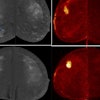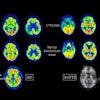
Editor's note: In his regular column, Europe's very own maverick radiologist, Dr. Peter Rinck, addresses the latest controversial topic. Find out now what's on his mind.
Some days ago a fellow radiologist brought to my attention an article hidden at the end of a recent issue of Radiology. She considered the paper "weltfremd," which is one of those German words that are difficult to translate. The closest interpretation is "out of touch with reality" or, in the case of science, "from the ivory tower."
 |
| Peter Rinck, MD, PhD, Maître de Conférence and visiting professor of medical imaging at the University of Mons, Belgium. |
During the past 30 years, I have peer-reviewed countless articles for a wide range of medical journals and written reviews on scientific books. But I never thought I would sit down and draw up a review on an already published article in one of the major radiological journals.
The title of the article is "Globalization of P4 Medicine," with "medicine" and "medical care" being freely replaceable terms for "radiology." The article is a summary of a symposium on strategic studies in radiology; a blend of ideas by several authors who presented at that meeting in 2009. The authors are from various European and North American countries with different cultures of radiology, though all of them are high-level academics.
The four P's in the title stand for predictive, personalized, preemptive, and participatory -- all of it on a global level. They "derive from new directions in medical science largely based on genetics, renewed recognition of the medical and financial benefits of maintaining wellness, and heightened recognition of the importance of tailoring care to the unique characteristics of individuals, while expecting them to participate in their own medical care. With modern means of communication and the sharing of medical knowledge, expectations are rising around the world," the authors wrote. "We can anticipate that P4 medicine will have profound effects on the delivery of healthcare globally, and will transform the practice of radiology."
This is how the paper begins. Then we read page after page of descriptions of what was, and what will be, interspersed with sentences such as "However, only a few hospitals have taken full advantage of these technologies," or "However, the adoption of imaging to screen for Alzheimer's disease will not serve a useful purpose until more effective therapies are established."
What I expect from a paper that is meant to be pivotal in proposing radiology strategies is critical assessment of the state of the art, not the common soft statements on the helplessness of radiology in screening, combined with wishful thinking that the future may be bright.
"Many predictive imaging techniques are far from the stage of clinical implementation," the authors noted. But what the working radiologist out there really wants is serious and solid proposals for the future. Basically, most of the key concepts that are proposed are outside the realm of medical imaging, and definitely outside of radiology.
The discourse is diametrically opposed to the daily reality of radiology, and predicts no future for clinical radiologists -- unless they are system biologists, genetic engineers, or molecular scientists. If this is radiology's contribution to the transformation of healthcare, we should urgently look for a new class of image readers who are not called radiologists any more, but who do the job, such as image-reading and radiological-intervention professionals. There might be a new medical discipline covering the fields described in the paper, but it won't be diagnostic imaging. How can we anticipate future health problems if we cannot handle today's?
Every so often the paper takes on state administrations' or international organizations' manner of speaking: "Enhancing the culture of professionalism and increasing patient focus will also help avoid the negative aspect of commoditization of radiology, which could lead to lowering of standards in return for a lower prize."
It's neither easy reading nor easily understandable, and definitely not original research, as Radiology claims. The list of references contains numerous noncitable or untraceable papers. Where is the strategy? Where are the suggestions and answers we are waiting for? Why wellness and not health?
For me, personalized radiology (abbreviated PR) stands for public relations: talking to the patient, bringing the human aspect back into radiology, and being a physician -- not the extended arm of a machine. Great leaps forward are usually simple, as are many great achievements. Let's follow that flag -- globally.
ReferenceBradley WG, Golding SG, Herold CJ, Hricak H, Krestin GP, Lewin JS, Miller JC, Ringertz HG, Thrall JH. Globalization of P4 Medicine: Predictive, Personalized, Pre-emptive, and Participatory – Summary of the Proceedings of the Eighth International Symposium of the International Society for Strategic Studies in Radiology, August 27-29, 2009. Radiology. 2011 Feb; 258 (2): 571-582.
The comments and observations expressed herein do not necessarily reflect the opinions of AuntMinnieEurope.com, nor should they be construed as an endorsement or admonishment of any particular vendor, analyst, industry consultant, or consulting group.



















